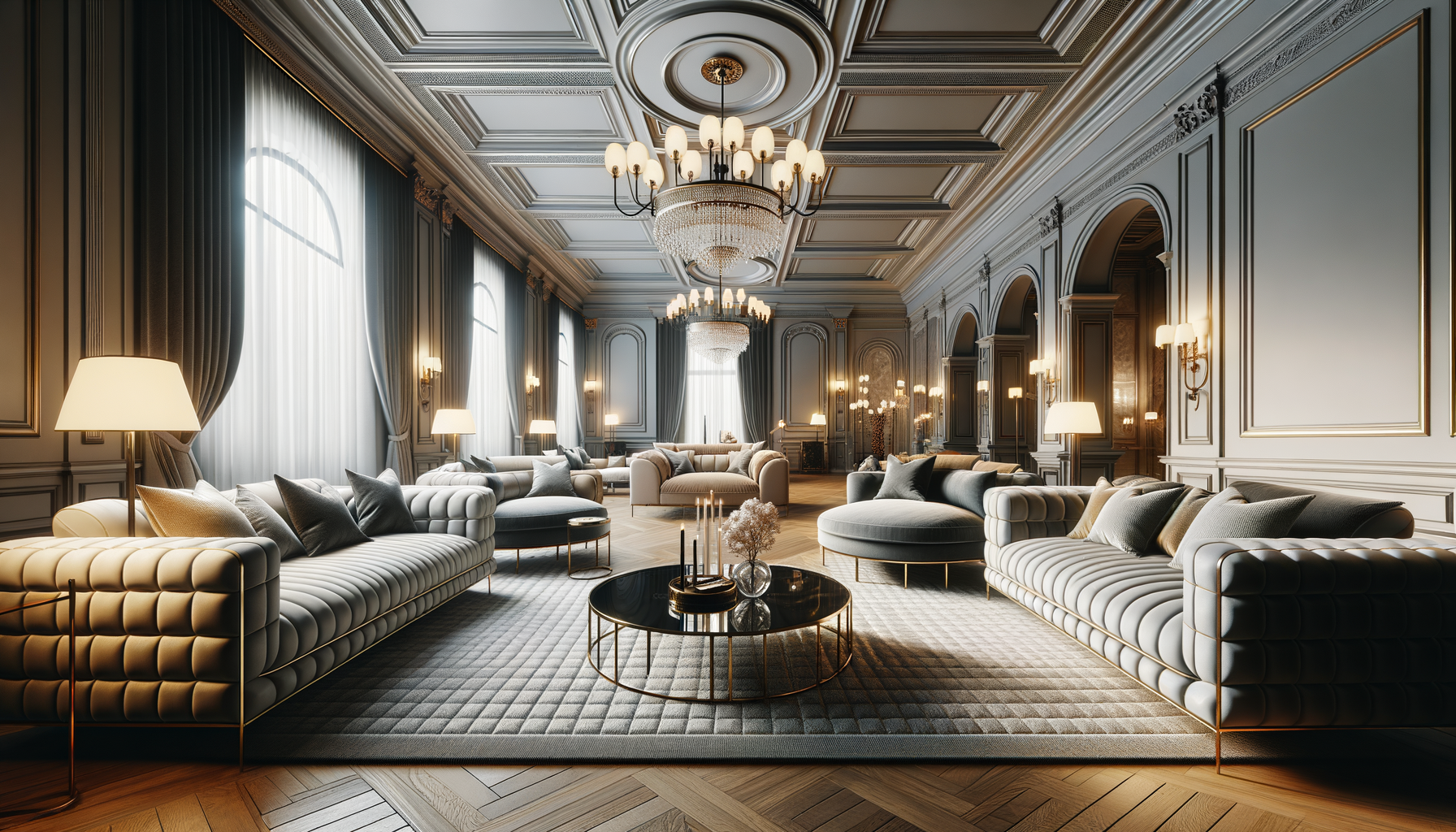The Evolution of Sofas & Couches: A Historical Perspective
Sofas and couches have come a long way from their initial inception as simple wooden benches. The evolution of these furniture pieces is a testament to the changing tastes and requirements of society. Originally, seating arrangements were more about functionality than luxury. However, as civilizations advanced, so did the desire for comfort and elegance. In ancient Egypt, for instance, furniture began to reflect status and wealth, with intricate designs and the use of precious materials.
Fast forward to the Renaissance period, and the sofa began to take on a more luxurious form. Upholstery became a significant aspect, with rich fabrics and cushioning transforming the humble seat into a symbol of opulence. The Industrial Revolution further propelled this evolution, making sofas more accessible to the general public due to mass production techniques.
Today, the blend of luxury and functionality is evident in modern designs. Manufacturers focus on ergonomic designs that cater to both aesthetic appeal and user comfort. This historical journey highlights how sofas and couches have adapted to meet the needs of different eras, reflecting broader societal changes.
Materials and Craftsmanship: The Heart of Quality
The quality of a sofa or couch is deeply rooted in the materials and craftsmanship involved in its creation. High-quality materials such as hardwood frames, durable fabrics, and high-density foam are essential for a long-lasting piece. The choice of material not only affects the durability but also the comfort and aesthetic appeal of the furniture.
Craftsmanship plays a pivotal role in ensuring that these materials are put together in a way that maximizes both functionality and luxury. Skilled artisans pay attention to details such as stitching, cushioning, and frame construction. For instance, hand-tied springs are often used in high-end sofas to provide superior support and comfort.
When selecting a sofa, it’s important to consider the balance between material quality and craftsmanship. A well-crafted piece with premium materials can provide a lifetime of comfort and style, making it a worthwhile investment for any home.
Design Trends: Balancing Aesthetics and Functionality
In the world of interior design, trends continuously evolve, and sofas and couches are no exception. Currently, there’s a significant focus on minimalist designs that emphasize clean lines and neutral colors. This trend is driven by the desire for spaces that feel open and uncluttered, providing a sense of calm and order.
However, functionality remains a key consideration. Many modern sofas incorporate features such as adjustable headrests, reclining mechanisms, and hidden storage compartments. These elements add to the practicality of the piece without compromising on style.
Another trend is the use of eco-friendly materials and sustainable production methods. As consumers become more environmentally conscious, there is a growing demand for furniture that aligns with these values. This shift not only impacts the design but also the materials and processes used in manufacturing.
Ultimately, the goal is to create a harmonious blend of aesthetics and functionality, ensuring that the sofa is both a visual centerpiece and a comfortable, practical addition to the home.
Choosing the Right Sofa: Considerations for Every Home
Selecting the right sofa involves more than just picking a design that catches your eye. Several factors should be considered to ensure the piece complements your lifestyle and home environment. Size is a crucial consideration; a sofa that is too large can overwhelm a space, while one that is too small may not provide adequate seating.
Comfort is another key factor. It’s important to test the sofa for comfort by sitting on it for a few minutes to assess the cushioning and support. Additionally, consider the primary use of the sofa. Will it be a formal piece for entertaining guests, or a cozy spot for family movie nights?
Practical aspects such as maintenance and durability should also be considered. Families with young children or pets may benefit from sofas with stain-resistant fabrics or removable covers for easy cleaning.
By taking these factors into account, you can choose a sofa that not only enhances the aesthetic of your home but also meets your practical needs.
The Future of Sofas: Innovations on the Horizon
As technology continues to advance, the future of sofas and couches looks promising with innovative features that enhance user experience. Smart sofas are emerging, offering features such as built-in charging ports, Bluetooth connectivity, and even integrated speakers for a multimedia experience.
There’s also a growing trend towards modular sofas that offer flexibility and adaptability. These designs allow users to customize their seating arrangements to suit different occasions and spaces, providing a versatile solution for modern living.
Moreover, the use of artificial intelligence in design is beginning to influence the furniture industry. AI can help in creating ergonomic designs that cater to individual preferences and body types, ensuring maximum comfort and support.
These innovations indicate a future where sofas are not just about comfort and style, but also about integrating seamlessly into our tech-savvy lifestyles, offering convenience and personalization like never before.








